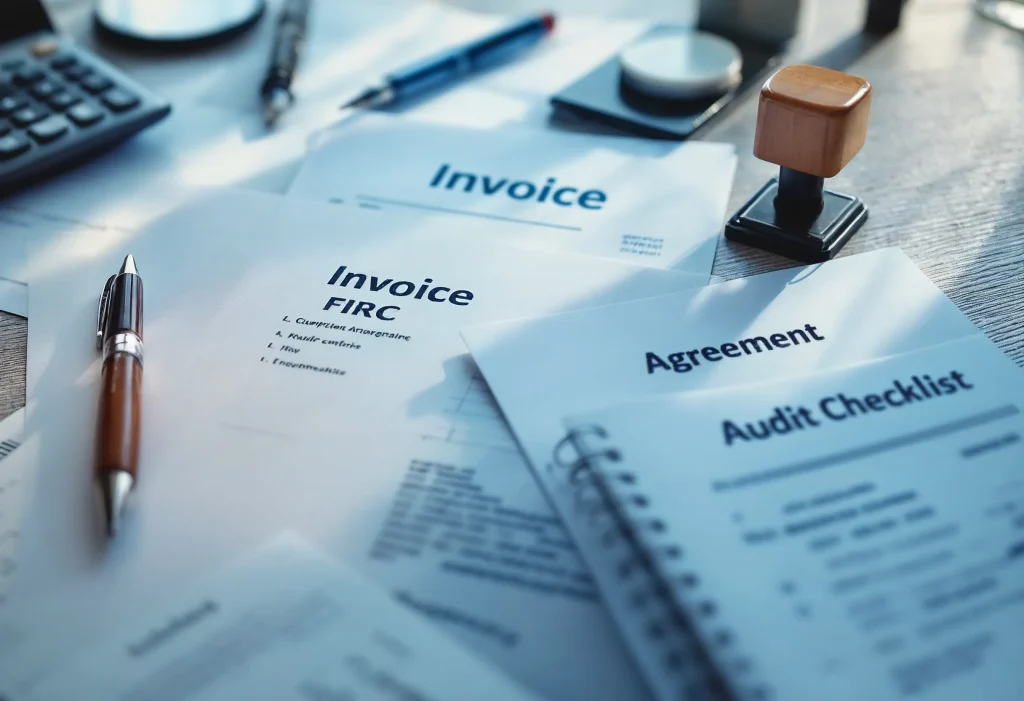Managing cross-border payments can feel overwhelming, but maintaining the right paperwork protects your business from regulatory risks. Whether you’re a startup getting paid by international clients or an exporter sending money abroad, having the right RBI FEMA documents ready ensures compliance and smoother banking.
This guide gives you a complete audit checklist for export services, inward remittances, and outward payments—so you’re prepared for audits, incentives, and growth.
Why RBI/FEMA Documentation Matters
Before diving into the checklists, here’s why documents for inward remittance and outward remittance are crucial:
- Legal Compliance – RBI and FEMA regulations require documentary proof for all foreign exchange transactions.
- Faster Banking Approvals – Authorized Dealer (AD) banks often request supporting documents before clearing remittances.
- Audit Preparedness – Exporters are advised to keep records for at least 5 years for RBI or FEMA audits.
- Business Benefits – Certain proofs (like a bank certificate for export or FIRC/FIRA) help you claim GST refunds or export incentives.
Checklist for Inward Remittances (Money Coming into India)
When you receive payments from overseas clients, investors, or buyers, maintain these documents for inward remittance:
1. Foreign Inward Remittance Certificate (FIRC) / Advice (FIRA)
Proof from the bank that foreign funds were received. Essential for export incentives, GST refunds, and compliance.
2. Purpose Code Documents & Declaration
Every inward remittance must carry an RBI purpose code (e.g., software export, consultancy fee). Keep your declaration and ensure codes match invoices.
3. Invoice or Agreement
Client invoices, contracts, or agreements backing up the payment reason.
4. KYC & Business Credentials
PAN, address proof, Import-Export Code (IEC), Certificate of Incorporation, etc.
5. Bank Credit Advice / SWIFT Copy
Statements from your bank showing inward remittance, conversion rates, and credited INR amount.
6. Additional Supporting Documents
Purchase orders (for advance payments), board resolutions (for foreign investments), or FEMA filings (like FC-GPR for equity inflows).
Keeping these ensures you never miss out on tax benefits or compliance while proving every dollar earned is legitimate.
Checklist for Outward Remittances (Money Sent Abroad)
For international vendor payments, freelance hires, or investments, maintain these RBI FEMA documents:
1. Form A2 (Remittance Application)
The primary RBI form declaring the reason for the transfer. Always keep a copy.
2. Invoice / Supporting Bill
Proof of goods or services received (e.g., software subscription invoice, freelancer’s bill).
3. Purpose Code & RBI Approval (if required)
Correct purpose code for every remittance. Some payments (like overseas investments) may need prior RBI approval—retain approval letters.
4. Form 15CA / 15CB (Tax Forms)
For larger remittances, these prove you’ve followed Indian tax rules. Required before certain funds can be sent abroad.
5. Bank Debit Proof / SWIFT Copy
Confirmation of payment sent, exchange rates applied, and charges deducted.
6. Internal Approvals / Resolutions
For companies, approvals for large transfers show good governance during audits.

Checklist for Export of Services & Other Exports
If you export IT, consulting, or digital services, this audit checklist for export services applies:
1. Softex Forms
Mandatory for IT/software exports. File with STPI/SEZ and keep acknowledgments.
2. Contracts & Client Communication
Agreements, statements of work (SOW), or even key client emails serve as proof of service delivery.
3. Export Invoices & Payment Tracking
Maintain a log linking each invoice to inward payments with FIRCs/e-FIRAs.
4. Bank Realisation Certificate (BRC/eBRC)
Issued by banks after receiving export proceeds. The bank certificate for export is essential for DGFT filings, incentives, and compliance.
5. Goods Export Documents (if applicable)
Shipping Bills, Airway Bills, Bills of Lading, and Customs Export Declaration Forms.
Purpose Codes & Bank Certificates: The Cornerstones of Compliance
Two documents every exporter must get right:
- Purpose Code Documents – These classify each transaction (exports, imports, consultancy, FDI, etc.). Wrong codes can delay or invalidate payments.
- Bank Certificates (FIRC/BRC) – Proof that foreign exchange has been received and realized in India. Without them, you can’t claim incentives or show compliance.

Staying Audit-Ready
Here’s how to stay stress-free during audits:
- Organize by transaction/month with all supporting files.
- Track FEMA timelines (6 months for service export proceeds, 9 months for goods).
- Retain records for at least 5 years (preferably 8 years).
- Educate your finance team on purpose codes and compliance requirements.
- Consult your AD bank or compliance advisor if unsure.
Final Thoughts
Maintaining RBI FEMA documents for inward and outward remittances is not just about compliance—it’s about building credibility, unlocking tax refunds, and ensuring smooth global growth.Think of these checklists as your compliance toolkit. With the right purpose code documents and bank certificates for export, you’ll always be audit-ready, compliant, and positioned for international opportunities.



